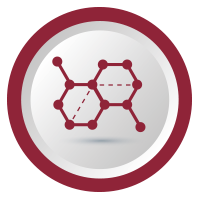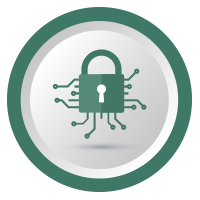 Enterprise and System of Systems
Enterprise and System of Systems
Mission Engineering projects will develop new foundational concepts for Mission Engineering, then work from these concepts to create prototypes of both types of toolsets with plans to transition the prototypes into established DoD software systems.
This research program addresses the need to create and mature decision-support tools specifically for evolving system of systems (SoS) architectures and capabilities. The research to date has explored analytical methods to quantify the impact of system interdependencies in the context of SoS capability development as well as broader agent models that address the often-fuzzy influence of stakeholder perspectives in the technical development activities. Additional research has focused on identifying innovative approaches to support SE in architecting, engineering, and evolving complex SoS. Continuing research in this area will focus on SoS and constituent system situational awareness, strategic approaches for simplifying SoS architectures and their ability to restructure quickly to respond to new needs and missions, as well as the implementation of an SoS Toolbox repository to make maturing SoSE tools generally available to SoS and constituent system development teams.
- System of Systems Analytic Workbench
- Enterprise Systems Value-Based R&D Portfolio Analytics: Methods, Processes, and Tools
- Evolutionary Requirements For Net-Centric Enterprise
- Flexible Intelligent Learning Architectures for Systems of Systems (FILA-SoS)
- Multi-Level Socio-Technical Modeling and Enterprise Systems Analysis
 Trusted Systems
Trusted Systems
Achieve much higher levels of mission trust by applying the systems approach to achieving system assurance and trust for the increasingly complex, dynamic, autonomous, cyber-physical-human net-centric systems and systems of systems.
Create, validate, and transition methods, processes, and tools (MPTs) to ensure systemic security using knowledge of system objectives and operation. Given the numerous sources of security breaches available at low cost to attackers, a major concern is to make DoD systems, system of systems, and enterprises harder to attack, while simultaneously making them more difficult and expensive to penetrate and damage. Ensuring that a system meets its intended security goals is one of the most critical aspects of ensuring that system will perform its intended capabilities as expected in operation. While security is a system property that itself requires assurance, security is also a unique type of vulnerability that did not exist in its current form prior to the technological advances of today’s cyber-physical systems. Because of the intense focus security requires, the Trusted Systems area maintains security as a distinct research thrust while simultaneously recognizing its relationship to Systemic Assurance.
- Security Engineering – Design Patterns and Operational Concepts
- Security Engineering – Decision Support Tool
- Systemic Security and the Role of Heterarchical Design in Cyber-Physical Systems
- Developmental Test and Evaluation (DT&E) and Cyberattack Resilient Systems
- Trusted Artificial Intelligence Systems Engineering Challenge
Create, validate, and transition methods, processes, and tools (MPTs) to provide systemic assurance of safety, reliability, availability, maintainability, evolvability, and adaptability The objective of Trusted Systems is to provide assurances that a system will dependably behave as expected and do so without constraining additional functionality or resulting in high-regret, unintended consequences. Increasing automation and the resulting dynamic models of trust and assurance pose key challenges for future systems. Besides security attacks, there are numerous sources of system disruption such as natural disasters, system misuse, system overload, component wear out, and defects in a system’s requirements, design, or construction. There are also challenges created through the augmentation of defense systems with increasingly varied levels of autonomy, self-learning, and manned-unmanned teaming. Preventing or otherwise addressing disruptions and untended consequences of these factors, which can cause loss of stakeholders’ lives, capability, assets, etc., requires significant improvements in trust not only for current systems, but for the more complex and dynamic DoD systems, system of systems, and enterprises of the future.
- Electronic Component Survivability in Harsh Environments
- Reliability of Silver Wire Bonds in Harsh Environments
- Product Assurance for Electronics in Harsh Environments
- Data Science Approaches to Prevent Failure in Systems Engineering
- Human-Machine Team (HMT) Concepts for Resilient Autonomous Systems
- Identifying and Measuring Modularity Violations on Cyber-Physical Systems
- Tools and Methods Framework for Shipboard Power and Energy Systems
- Game-theoretic Risk Assessment for Distributed Systems (GRADS)
- Data Assimilation, Analysis and Fusion across Modalities and Varying Latencies: Earth Orientation Parameters’ Estimation and Prediction
- Methods to Evaluate Cost/Technical Risk and Opportunity Decisions for Security Assurance in Design
- Risk Based Approach to Cyber Vulnerability Assessment
- Quantum Phototonics Tasks for Research
- Characterization of Potting Materials in Military Environments
- Ecology-Inspired Techniques for Resilient Design of Systems of Systems (SoS)
- Validation Framework for Assuring Adaptive and Learning-Enabled Systems
- Transitioning Mission Aware Concepts and Methods to Evaluate Cost/Risk Decisions for Security
- Safety Assessment Methods for Supercritical Water Oxidation (SCWO) facility at Blue Grass Chemical Agent Destruction Pilot Plant (BGCAPP)
- Characterization of Emerging Technologies in Military Environment
 Systems Engineering and Systems Management Transformation
Systems Engineering and Systems Management Transformation
Develop methods, processes and tools to enable the transformation from sequential, document-driven, highly constrained practices toward much faster, flexible OODA-loop-supporting mission and enterprise-oriented approaches enabled by advances in modeling, simulation, data-driven analysis and artificial intelligence.
The largest challenge facing DoD weapon system development is the need to dramatically accelerate the delivery of new capabilities and new technologies to the warfighter. Systems Engineering is the most direct approach to attacking this challenge. Research projects in this area will develop methods for finding a balance among development speed, system performance, cost and risk. The goal will be a prototype set of methods and processes to bring speed, performance, cost and risk to bear on system design and development decisions from pre-milestone A through every step and every level of system development.
- Tradespace and Affordability
- Framework for Analyzing Versioning and Technical Debt
- Verification and Validation (V&V) of System Behavior Specifications
- Systems Engineering Business and Analytics
- Global Positioning Systems ‐ Mission Engineering and Integration of Emerging Technologies
- Reducing Total Ownership Cost (TOC) and Schedule
- Analyzing and Assessing Contracts for Embedded Risk
- Keyphrase Extraction using Language Embeddings
- Quantum Technologies for Armament Systems
Digital Engineering research will focus on filling the gaps in current digital engineering technology, with projects on model integrity and model composability, exploring the interaction between engineers and modeling tools with projects exploring the allocation of tasks between humans and computers, and integrating model-centric digital engineering into the acquisition project.
- Interactive Model-Centric Systems Engineering (IMCSE)
- Transforming Systems Engineering through Model Based Systems Engineering-NAVAIR
- Transforming Systems Engineering through Model Based Systems Engineering-CCDC
- Model Curation Innovation and Implementation
- Design Evaluation, Automation and Optimization Dashboard for Armament and Ammunition
- Using AI/ML Design Patterns for Digital Twins and Model-Centric Engineering
- Methods for Integrating Dynamic Requirements
- Electronic Warfare Mission Engineering Analysis – Framework for a Reference Architecture
- Digital Engineering Measures
- Digital Engineering Implications on Decision Making Process
Projects in this area will create a new way of specifying requirements for autonomous and intelligent systems, and construct and test prototype toolsets to implement the new methods.
- Formal Methods in Resilient Systems Design using a Flexible Contract Approach
- Meshing Capability and Threat-based Science and Technology (S&T) Resource Allocation
- Next Generation Adaptive Cyber-Physical Human Systems
- PEAS Framework for Test and Evaluation of Multi-Agent Systems of Autonomous Intelligent Agents
- Intelligent Defense Systems
- Learning-Enhanced Autonomous Navigation for GPS-Denied Vehicles
- Evaluation and Design Guidance for Long Duration, Unmanned Undersea Vehicle (UUV)
- Engineered Resilient Systems
- Virtual Collaborative Environment for Conducting Project Design and Tests
- Development and Application of FACT Portfolio Management Capability
- Enterprise Architecture Tradespace Analysis
- Contingency Basing
- A 3-Year Roadmap to Transform the Discipline of SE
- A Complexity-Based Approach To Quantitative Technical Risk
- Agile SE Enablers and Quantification
- Agile-Lean Software Engineering Evaluating Kanban In SE
- Assessing SE Effectiveness In Major Defense Acquisition Programs
- Communications Effects Server Model
- Data Science Approaches to Prevent Failure in Systems Engineering
- Defining The Meaning Of A Major Modeling And Simulation Change As Applied To Accreditation
- Electronic Product Data Management (ePDM) to Improve Design Producibility, Reliability, Availability, Maintainability, and Sustainability
- Evaluation Of Systems Engineering Methods, Processes and Tools on Department of Defense and Intelligence Community Programs
- Flexible Vehicle System Engineering And Integration
- Graphical Concept Of Operations
- Integration Of Modeling And Simulation, Software Design And Department of Defense Architecture Framework (DoDAF)
- Life Cycle System Engineering Needs For Evolutionary Acquisition
- Modular Reconfigurable Architecture For Tailored Rapid Systems Engineering Artifact Generation And Dissemination
- Next-Generation Cost Estimation And Metrics For Software-Intensive Systems
- PEO Missiles and Space Systems Engineering Methods
- Quantitative Technical Risk
- System 2020
- System Readiness Level, System Maturity And Architecture Assessment
- Systems Engineering Approaches for Interagency Space Situational Awareness
- Systems Engineering Model and Simulation Integration Framework in Digital Thread
- Valuing Flexibility For Complex Engineering Systems
- Verification, Validation And Accreditation Shortfalls For Models And Simulations
 Human Capital Development
Human Capital Development
Establish active communities and mechanisms that create and support living bodies of System Engineering knowledge.
Develop an open source community that creates, validates, and transitions technology and content for the use of experiential technology to educate systems engineers and technical leaders.
Create, validate, and transition curricula and practices to support the instruction and learning of systems and technical leadership for inexperienced students in college and experienced professionals.
These projects noted below are exploratory in nature and designed to determine the needs for future Human Capital Development (HCD) research.
- Systems Engineering And The Cloud
- Army Systems Engineering Career Development Model
- Missile Defense Agency (MDA) Research and Course Development
- Strategic Planning Science and Technology Portfolio
- Systems Engineering Assessment & Workforce Development Plan
- Systems Engineering Expert Knowledge (SEEK)
- Body Of Knowledge And Curriculum To Advance Systems Engineering (BKCASE)
- Leadership Development Framework for the Technical Acquisition Workforce
